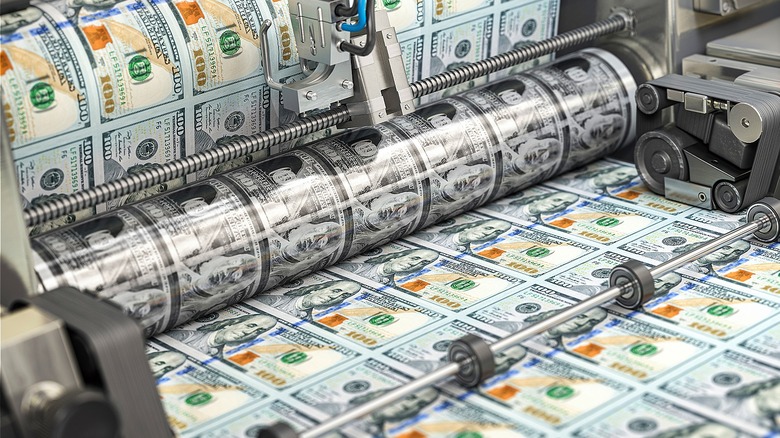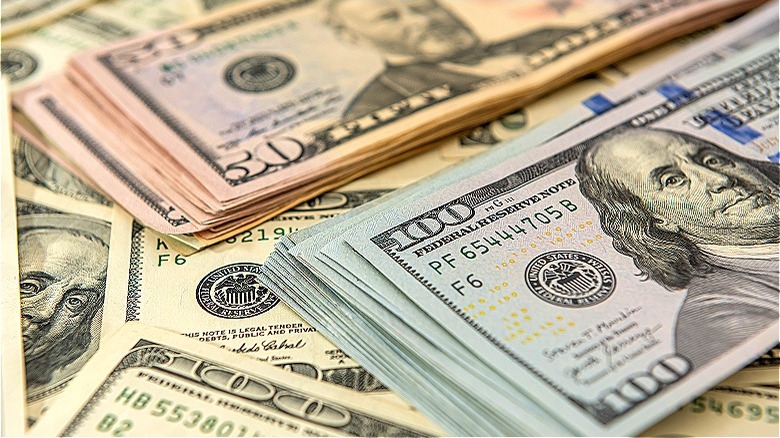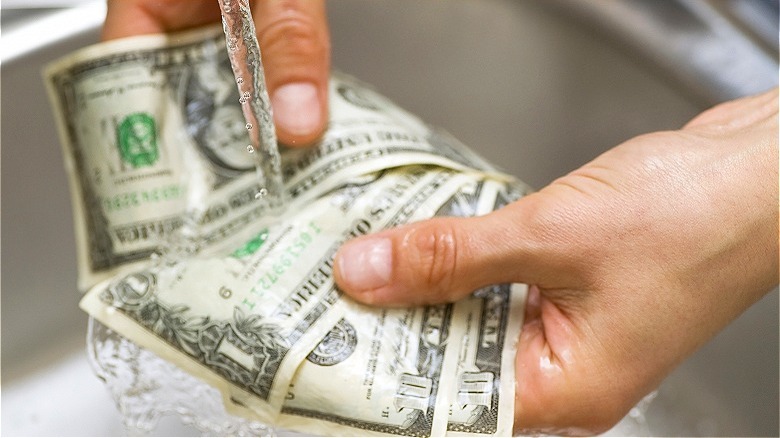US Cash Isn't Actually Made Out Of What You Think
Contrary to the popular slang "paper money," United States currency notes aren't actually made of paper, although they sure do feel like they are. Since 1862, the Bureau of Engraving & Printing has been tasked with printing all of the nation's currency at its facilities in either Washington, D.C. or Fort Worth, Texas. The backs of the bills always use green ink, but the front sides, called "faces," get printed with a combination of black ink, color-shifting ink (visible when the bill tilts), and metallic ink, depending on the particular denomination.
The surface that it's printed on, which we refer to as paper, is known in the currency business as substrate. In the case of U.S. bank notes, there are no wood fibers or starch, which are ingredients on traditional paper. Instead, the substrate is 25% linen and 75% cotton. The bureau doesn't make the paper in-house, but it's produced by a single source, Crane Currency in Massachusetts — and has been since 1879. It's against the law for anyone except for the Bureau of Engraving & Printing to possess the special paper.
Security is woven into the bills
Besides getting all of the cotton/linen "paper" from a single source, additional anti-counterfeiting measures are taken in the form of tiny red and blue fibers that are woven into the note's substrate. According to PBS, counterfeiters will attempt to duplicate these fibers by actually drawing them. However, this tactic will obviously lack the "authentic embedded fiber" that real currency should have.
There's also a clear security thread, sometimes called a security ribbon, running vertically through most paper money. It's invisible to the naked eye, but when exposed to ultraviolet light, the security thread becomes visible. Each denomination bill has a different color security thread and its location varies between bills as well. For example, it could be added to the left or right side of the portrait. Note that $1 and $2 bills aren't valuable enough to warrant the extra security ribbon feature.
Further, American cash is as durable as it is tough to duplicate. Per the U.S. Currency Education Program, a U.S. bank note could withstand being folding forward and backward 4,000 times and still not tear.
Some counterfeits still slip through
In spite of the extreme anti-counterfeiting measures taken by the United States, some currency forgers are successful. A widely touted statistic is that there's approximately $70 million worth of fake U.S. currency in circulation at any one time. Though the fakes probably wouldn't stand up to intense scrutiny, many small businesses and individuals don't bother to check for the presence of security features.
Thirsty for more currency facts? Each U.S. bill weighs 1 gram, regardless of denomination. That means it would take 454 bills to create 1 pound of money (as 453.592 grams = 1 pound). Further, if you've got a badly wrinkled or crumpled bill on your hands, fret not. You can spray a little water on the note and press it with a regular household iron — just like an article of clothing — to make it look like new. Remember, a bank note is made from linen and cotton. What's more, now you know why that fiver you left in your pants pocket was able to survive a trip through the wash. The money isn't paper at all, but fabric.


